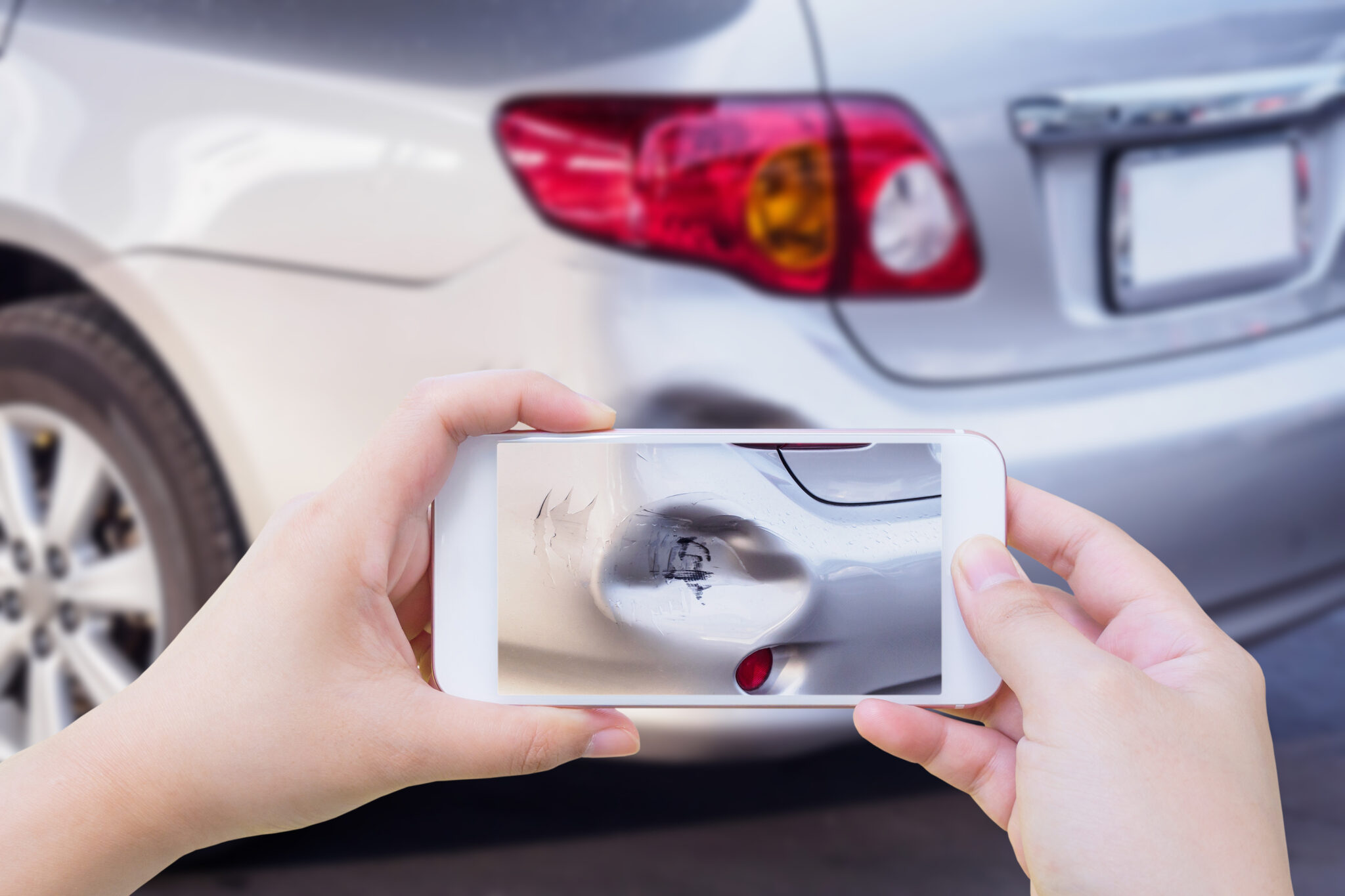Accidents happen. It’s a fact of driving. Fortunately, car insurance exists to cover a wide range of situations, including collisions.
After a wreck, you’ll more than likely need to file a claim. Depending on the situation, this could be with either your or another driver’s insurance company. Once you file, your provider will investigate the damages and cover the cost to repair your vehicle.
In this article, we’ll teach you how to file a claim with your insurance company or against someone else’s. You’ll learn what a claim is and when to file one. This also includes explaining key filing tips and best practices. Finally, you’ll find out what to expect after the insurer receives your claim, as well as your rights.
Car Insurance Claim Basics
A car insurance claim is a request by you, the policyholder, to your provider for coverage after a loss or damage. Without it, your insurer won’t know about the damages and can’t help you.
An insurance company will only accept a claim if your policy covers the damages. Any damages you cause or that aren’t covered will result in a rejection. Keep in mind that different types of coverages cover various damages. Standard auto coverages include:
- Liability. Primary type of auto insurance that covers any damages or injuries you cause in an accident.
- Collision. Pays for damages to your car from collisions with other objects or vehicles.
- Comprehensive. This protects you from damages caused by random disasters, such as weather, vandalism, or vehicle theft.
- Personal injury protection (PIP). PIP covers injuries to you or your passengers in an accident, regardless of fault.
- Medical payments (MedPay). Like PIP, this pays for medical bills you or your passengers have because of an accident. It also kicks in regardless of who caused the crash.
- Uninsured and underinsured motorist (UM and UIM). UM and UIM protect you from any damages a driver with no or too little insurance coverage causes. Without this, you could have to pay for repair costs and medical bills out of pocket.
How to File a Claim
Every insurer has a unique claims process. However, most strive to make it quick and easy. Below are important steps you can follow to ensure your submission goes through successfully:
1. Report the Accident to Your Insurer
Before you file a claim, you need to alert your provider about the incident. Tell them what happened, who was involved, and what the extent of the damages are. This helps them already have a record on hand before they receive a claim. You can also use this as an opportunity to find out if your policy will cover the damages.
2. Decide How You Want to File
Many insurance companies have various ways to file a claim. This includes via a mobile app, online, or over the phone. Before you file, be sure to find out which method will be easiest for you. It may also be a good idea to read mobile app reviews beforehand.
3. Know What You Need to Provide
Whenever you submit a claim, your provider will need certain documents from you. Not having the appropriate papers or evidence from the accident could cause your insurance carrier to reject your request. You also might miss out on coverage for some expenses, like towing. Here’s what you should keep on hand:
- Proof of claim form
- Police report copy
- Receipts for any towing or roadside services
- An account of what happened
- Date and time of the accident
4. Review Your Coverages and Limits
Before you submit anything to your insurance provider, make sure you know what coverages and limits you have. Your insurer will only cover damages that are under your coverage types. It also will only pay up to the limits you carry on your policy.
5. File the Claim
Once you’re ready, all that’s left to do is file the claim through your insurance company’s process. Be sure to file as soon as you can. Some states have deadlines. When you file, make sure to provide accurate information. Also, be ready to provide a detailed account of what happened during the accident.
6. Work with an Adjuster
Immediately after your request goes through, your carrier will assign an insurance adjuster to you. An adjuster determines the extent of the damages to your car and how much you’ll receive in compensation. There’s a chance you’ll need to speak with them on the phone or in-person to go over the details.
While you work with the adjuster, you might have to get an estimate from a repair shop. This will help your insurer know how much it’ll cost to fix your vehicle.
7. Determine If You Need a Rental Car
You may need a rental while your car’s out of commission. If you have rental reimbursement coverage, your insurer will pay for you to have a stand-in car. This can be very useful after an accident, especially because the claims process can take some time.
8. Repair or Replace Your Car
Now, it becomes a waiting game. After your insurer properly investigates your request, you should receive a settlement. This allows you to repair your car back to its original condition. However, if your car is a total loss, you’ll receive a check for the actual cash value (ACV) of your vehicle. This is how much it’d cost to replace it, minus depreciation.
9. Pay Your Deductible
Whenever your insurer covers any expenses, you must pay a deductible. This is the amount you agree to pay any time you file a claim. Your deductible amount will be sent to you, but you may also find it on your proof of insurance card or policy declarations page.
When to File a Claim
After an accident, most people want to rush straight into reporting a claim. But not so fast. It may not always make sense to file. There are times when you should file, and others when you shouldn’t. Here are scenarios where you should file:
- There was an injury. If there’s an injury or death, you must file an insurance claim and report the accident to the police.
- There was significant damage. Lots of damage equals expensive repair costs. It makes sense to let your insurer pay for it instead.
- The accident involved another party. If the accident involved someone else, you should file a claim. Settling with the other party is often a bad idea. They could come back later and sue you for more damages, costing you tons of money. It’s best to just file and avoid this horrid situation.
When You Shouldn’t File
In most cases, it’s the right choice to file a claim with your insurance company. However, there are some situations where it may not make sense, for example:
- The damages cost less than your deductible. This is the amount you must pay your insurer when it helps pay for an accident. If the damages to your car are less than your deductible, you shouldn’t file a claim.
- You’ve filed several claims recently. If you have a history of contacting your insurer, you might consider not filing. Otherwise, your rates could go up. You shouldn’t avoid filing if the damages will financially ruin you, however.
- The accident only involves your car. When the accident only involves your car, you have way more control over what to do after. With this situation, it’s up to you to weigh the pros and cons of filing.
Frequently Asked Questions
Should I file a claim?
In most cases, you should file a claim with your insurer. This is especially true when there’s been an injury, death, or significant damage. However, if you’ve found yourself in a single-car accident with little damage, you could avoid it. Just be sure that the repair costs are less than your deductible.
If you end up in a minor accident with another driver, it may be tempting to not file a claim. The other person might try to convince you to not involve insurance companies. Don’t listen to them. It’s important to alert your insurer of an accident with another driver at all times. The other party could find “new” damages months later and try to sue you. Protect yourself by getting your provider on your side.
How long does an auto insurer have to settle my claim?
Your car insurance coverage provider has a responsibility to payout your claim on time. Many states, such as California and Texas, set deadlines for insurers during the process. In general, you can expect everything to be taken care of within 90 days. However, more complex claims can take longer to settle.
How long do I have to file a claim after a car accident?
Insurance companies aren’t the only ones with deadlines during the claims process. Accident victims must file claims in a reasonable amount of time. Some states set firm time limits how much time can pass before you file with your carrier.
For instance, California has a two-year claim filling deadline. It’s best not to wait long to submit a request for reimbursement to your insurer. You should aim to file your claim as soon as possible to avoid any complications.
Do I file a claim with my insurance or the other driver’s?
This depends on what happened in the accident and who was at fault. If you caused the accident, you should expect to file a claim with your insurance policy for any damages to your car. You may also need to file a PIP claim if you suffered injuries and live in a no-fault state. However, if you were a victim, you would file against the other driver’s insurer. This is because their liability coverage would step in to protect you.


